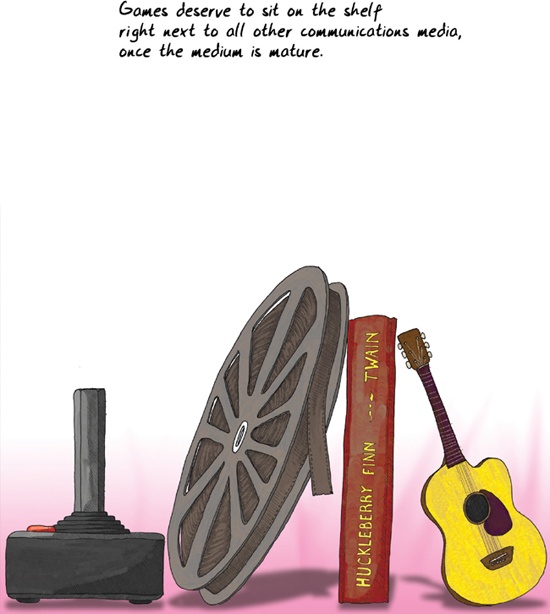Chapter 12. Taking Their Rightful Place

There are games that succeed at portraying concepts like social good or honor through mechanics—the work of Dani Bunten Berry comes to mind.* But far too many games do not do so with conscious intent. Games have the capability to sit on the shelf next to all other communications media. They are capable of art. They are capable of portraying the human condition. They are teaching tools. They carry socially redeeming content. They elicit emotion.
But we have to believe that they do, in order for them to reach their potential. We have to go into the systems design process, the ludeme-building process, aware that games have this potential and this capability. We have to consider ourselves as artists, as teachers, as people with a powerful tool that can be taken up.
It’s time for games to move on from only teaching patterns about territory, aiming, timing, and the rest. These subjects aren’t the preeminent challenges of our day.

Games do not need to be able to evoke an unexpected tear, like the Pietà.
Games do not need to be able to rouse us to anger against injustice, like Uncle Tom’s Cabin.
Games do not need to be able to send us spiraling into awe, like Mozart’s Requiem.
Games do not need to leave us hovering at the boundary of understanding, like Duchamp’s ...
Get Theory of Fun for Game Design, 2nd Edition now with the O’Reilly learning platform.
O’Reilly members experience books, live events, courses curated by job role, and more from O’Reilly and nearly 200 top publishers.

